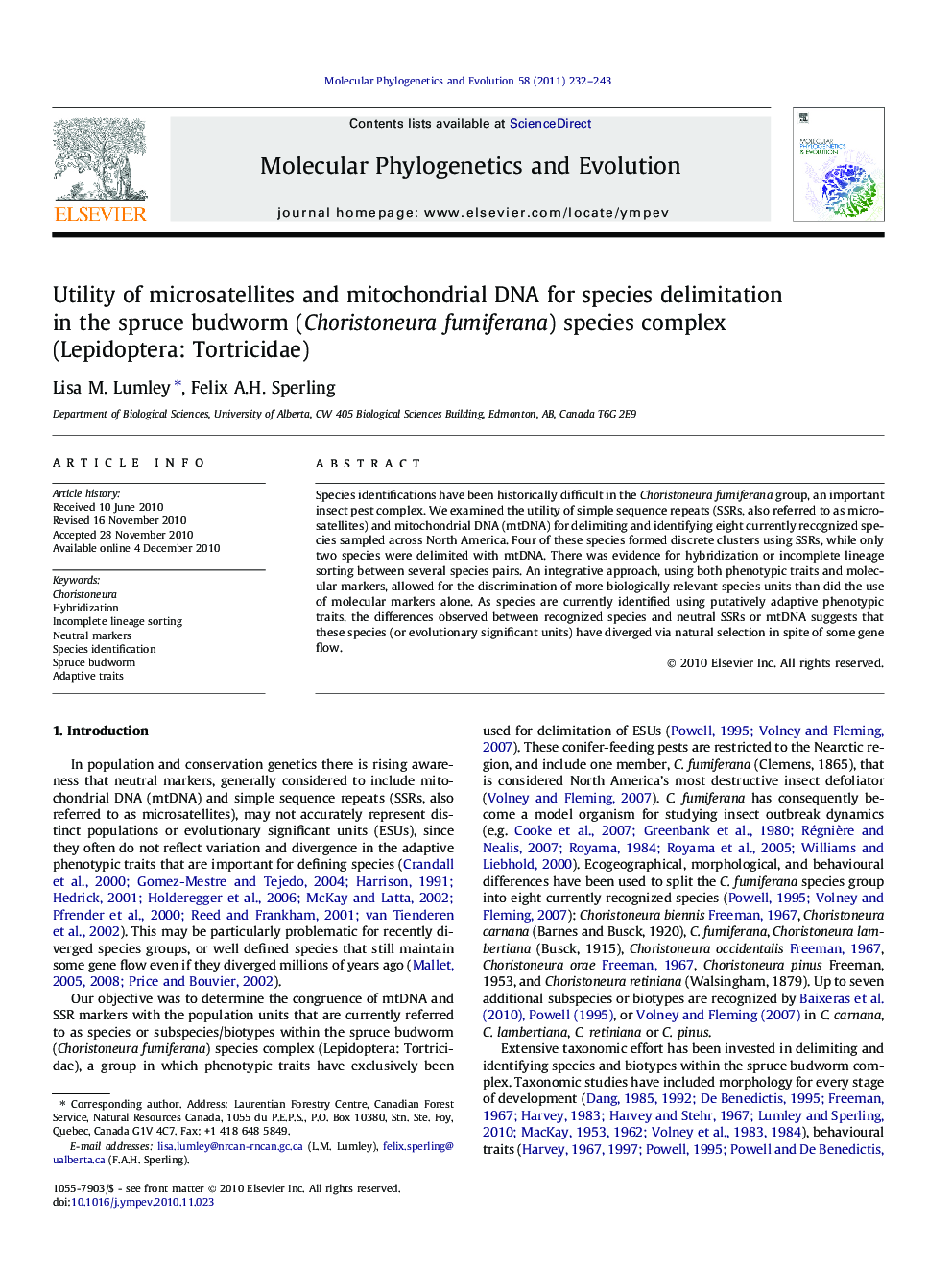| Article ID | Journal | Published Year | Pages | File Type |
|---|---|---|---|---|
| 5920781 | Molecular Phylogenetics and Evolution | 2011 | 12 Pages |
Species identifications have been historically difficult in the Choristoneura fumiferana group, an important insect pest complex. We examined the utility of simple sequence repeats (SSRs, also referred to as microsatellites) and mitochondrial DNA (mtDNA) for delimiting and identifying eight currently recognized species sampled across North America. Four of these species formed discrete clusters using SSRs, while only two species were delimited with mtDNA. There was evidence for hybridization or incomplete lineage sorting between several species pairs. An integrative approach, using both phenotypic traits and molecular markers, allowed for the discrimination of more biologically relevant species units than did the use of molecular markers alone. As species are currently identified using putatively adaptive phenotypic traits, the differences observed between recognized species and neutral SSRs or mtDNA suggests that these species (or evolutionary significant units) have diverged via natural selection in spite of some gene flow.
Graphical abstractDownload full-size imageResearch highlights⺠Phenotypic traits are currently used to identify species in the spruce budworm complex. ⺠Tested mtDNA and SSRs for species identification. ⺠mtDNA identifies two and SSRs identify four of the eight species. ⺠Integrative approach identifies more biologically relevant species units. ⺠Putatively adaptive traits suggest divergence via natural selection with gene flow.
